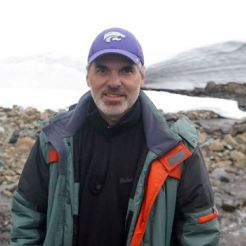Innovative Approaches for Modeling and Monitoring of Gully Erosion
A special issue of Earth (ISSN 2673-4834).
Deadline for manuscript submissions: closed (31 December 2021) | Viewed by 5033
Special Issue Editors
Interests: gully erosion; stochastic approach to landslide susceptibility modelling; GIS; machine learning to model soil erosion
Special Issues, Collections and Topics in MDPI journals
Interests: soil erosion; ephemeral gully erosion; watershed modeling; climate change impacts; hydrology
Special Issues, Collections and Topics in MDPI journals
Interests: geomorphology; photogrammetry; UAV; LIDAR; digital terrain analysis; spatial modelling
Special Issues, Collections and Topics in MDPI journals
Special Issue Information
Dear colleagues,
Gully erosion is a process of removal of topsoil along concentrated overland flow channels by surface water runoff; it causes land degradation in many regions and under different environmental conditions. In recent years, new technologies have emerged allowing to obtain high-precision measures of gully features and soil losses. Moreover, advanced computer tools were developed and applied to modeling of gully occurrence at different scales. In this Special Issue, we would like to invite gully erosion studies that are carried out at a range of hillslope to watershed scales and employ innovative and cutting-edge approaches to measure, monitor, and model gully initiation, channel development, and sediment production. This issue will cover research using recent advancements in capturing and processing of tri-dimensional point clouds which allow precise reconstruction of gully erosion landforms and monitoring of gully expansion. Furthermore, studies employing novel techniques or improvements of existing computer modeling approaches for assessment of gully occurrence, headcut location, and soil losses are particularly welcome.
Prof. Dr. Christian Conoscenti
Prof. Dr. Aleksey Sheshukov
Prof. Dr. Álvaro Gómez-Gutiérrez
Guest Editors
Manuscript Submission Information
Manuscripts should be submitted online at www.mdpi.com by registering and logging in to this website. Once you are registered, click here to go to the submission form. Manuscripts can be submitted until the deadline. All submissions that pass pre-check are peer-reviewed. Accepted papers will be published continuously in the journal (as soon as accepted) and will be listed together on the special issue website. Research articles, review articles as well as short communications are invited. For planned papers, a title and short abstract (about 100 words) can be sent to the Editorial Office for announcement on this website.
Submitted manuscripts should not have been published previously, nor be under consideration for publication elsewhere (except conference proceedings papers). All manuscripts are thoroughly refereed through a single-blind peer-review process. A guide for authors and other relevant information for submission of manuscripts is available on the Instructions for Authors page. Earth is an international peer-reviewed open access quarterly journal published by MDPI.
Please visit the Instructions for Authors page before submitting a manuscript. The Article Processing Charge (APC) for publication in this open access journal is 1200 CHF (Swiss Francs). Submitted papers should be well formatted and use good English. Authors may use MDPI's English editing service prior to publication or during author revisions.
Keywords
- gully erosion
- soil loss
- monitoring
- point clouds
- 3D photo-reconstruction
- statistical modeling
- machine learning
- data mining







